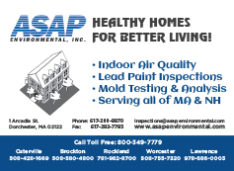Deleading vs Lead Safe Renovation
What's the difference between deleading and lead safe renovation? It's key to understand what's allowable when. The table below compares deleading vs. lead safe renovation.
| Deleading Law Applies | Lead Safe Renovation Law Applies | |
|---|---|---|
| Your Intent | To remove lead hazards | To improve the building through or around lead hazards |
| Age of house | Built before 1978 | Built before 1978 |
| Age of residents | Children under six | All ages |
| Compensation | Doing work as landlord of rented premises or common area | Doing work as landlord of rented premises or common area |
As you can see, the only difference is really your intent. You can also see that the lead safe renovation laws apply regardless of whether you have children living there. You must renovate safely.
Examples of Deleading Jobs
Deleading jobs are broken into three categories:
- Low risk: You can do it as a landlord today
- Moderate risk: You can do it as a landlord after receiving training
- High risk: You must hire a licensed deleader
You have a deleading job if you're doing any of the following:
- Replacing old, painted windows or doors (low risk)
- Replacing old, painted trim or mouldings (moderate risk)
- Scraping loose paint (high risk)
There are many more varieties of deleading jobs. Read more on the state deleading page.
Important: this article is not a complete explanation of deleading. You have to learn about inspections and many other restrictions before you begin any deleading work, otherwise your property could be assigned a permanent black mark and never get a delead certificate.
Examples of Lead Safe Renovation Jobs
Lead safe renovation jobs are not intended to remove lead hazards. They're intended to address something made of stuff other than lead. The wrinkle is that lead paint lies between you and the repair. You might have a lead safe renovation job if you need to:
- Replace a cast iron pipe behind a painted wall (plumbing)
- Cut a hole for a ceiling fixture on a painted ceiling (electrical)
- Replace a vinyl window (not painted) that has painted moulding around it (construction)
In general, all plumbing and electrical work is subject to lead safe rules if you work through painted surfaces in a pre 1978 house.
If you disturb more than 6 ft2 of painted interior surface, 20 ft2 of exterior surface, demolish any walls, use a heat gun, use a sander, or replace a window, you must follow the RRP rules.
Deleading vs. Lead Safe Renovation Techniques
The way to control lead dust is to put up plastic sheeting, wear coveralls and a respirator, and tape the plastic on the walls and on you in such a way that no dust gets onto human beings during the repair or in the process of cleaning up.
For landlords, there is a combination training course that lasts 12 hours (one and a half days). After taking the training course you will be licensed to do moderate risk deleading work. You will also have a waiver to perform lead safe renovation techniques. With these two authorizations you will have the knowledge to deal with any lead hazard or any repair without violating the law. If you do your own work, you should take these course.
Otherwise, it falls to you to hire licensed deleaders and lead safe renovators for every job touching paint in an old house.
Checklist for RRP Compliance
Have a binder on-site with:
- Lead paint report
- RRP license
- Course certificate
- Respirator
- Plastic sheeting
- HEPA vacuum
EPA Regulation:





